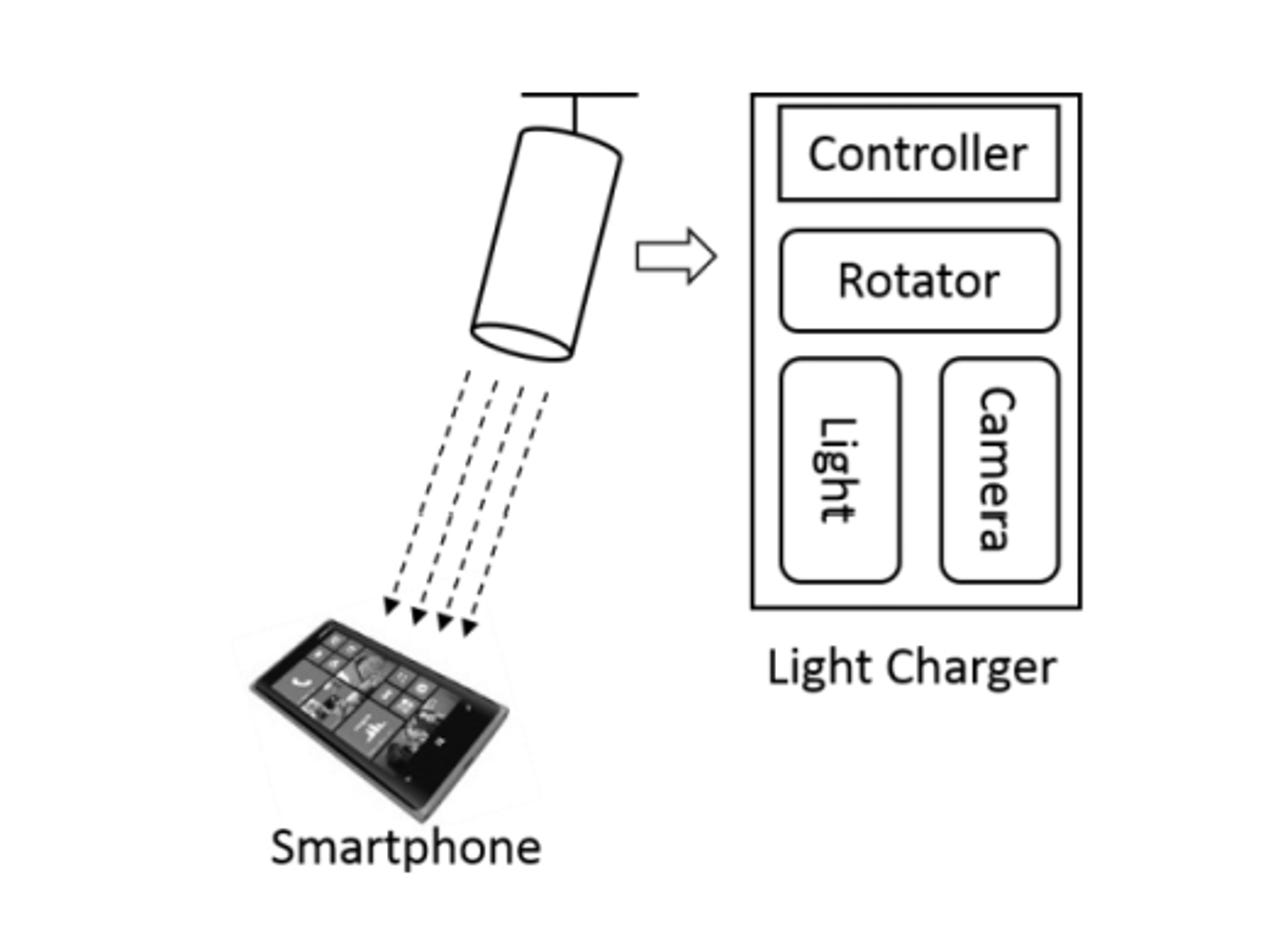Microsoft designs a lamp that could charge your smartphone

Microsoft has designed a lamp that will detect your phone and charge it by shining a light onto its surface.
Tests show the light from the lamp can replenish phones fitted with solar panels as rapidly as wired charging. Microsoft Research has built a working prototype but the charging system remains for now a proof-of-concept rather than anything that will appear in a commercially available product anytime soon.
The AutoCharge system would work by using cameras to detect a phone on a desk or in a room and angling the lamp's beam onto the smartphone's surface.
A paper written by Microsoft researchers envisions three uses for 'AutoCharge': sat on a table charging any phone placed on the surface, hung from the ceiling charging any phone in a room (although Microsoft admits maintaining sufficient beam strength would be challenging), and sat in a box that charges any phone put within it.
To maximise the speed and efficiency of the charger AutoCharge would give off a "straight light beam with little scattering", the research document says.
In the prototype system the phone's solar panels included an LED that would give off a series of blinks, which could be detected by the AutoCharge cameras, when the device needed charging. It took a maximum of three seconds for the prototype to detect the signal.
Most phones don't come with integrated solar panels but Microsoft Research suggests a transparent film, such as those provided by Wysips, could be placed over the screen and the rear of existing devices to facilitate charging.
To accurately pick out a phone within a room, the system would include multiple cameras to allow it to extract the depth of objects in its view and determine both the dimensions and volume of handsets. If there are multiple smartphones on the same desk, the charger can charge them one by one, the paper says.
To get around the problem of people being annoyed by the shining of a visible light, the system may use an infra-red light beam, which can't be seen by the human eye. The beam itself can cut out within 50ms if the cameras detect another object, such as a person, in its path.
The prototype used the head of an UltraFire CREE XM-L T6 Focusing LED Flashlight to generate the beam of light. The strength of the beam would not pose any sort of safety hazard, according to Microsoft researchers.
"It is actually much safer than sunlight because 1) the light beam is cool light and thus causes less heat than sunlight; 2) a large part of the energy of the light beam is converted by the PV [photo-voltaic] panel into electricity and thus generates even less heat," they state in the paper. The beam's energy level was about 110 mW/cm2, which is only slightly higher than that of sunlight of AM1.5 spectral irradiance.
"The key idea of the AutoCharge approach is identifying the opportunities of smartphone charging from a user's existing action of putting a smartphone on a desk and automatically charging the smartphone without requiring explicit effort from the user," the paper says.
Read more: